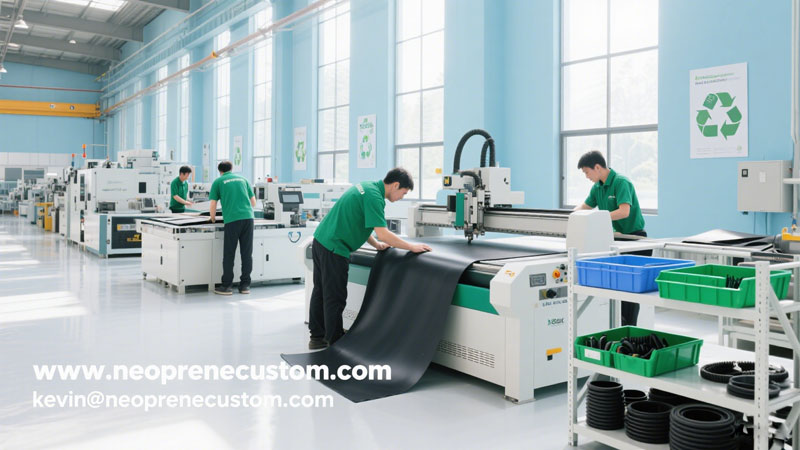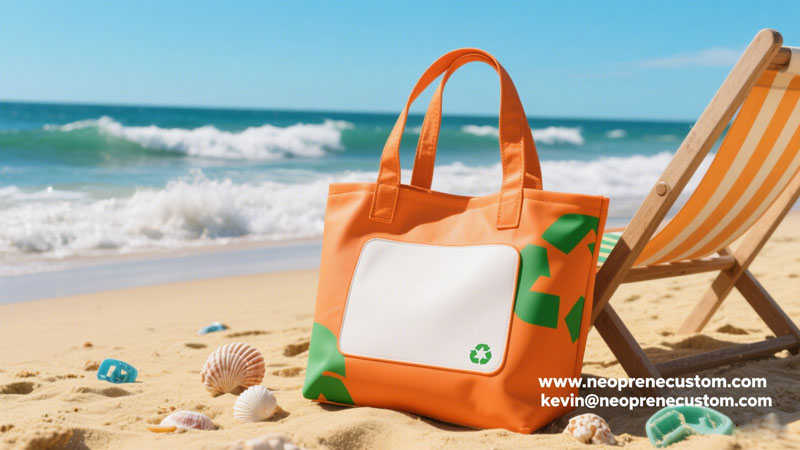Are you a brand struggling to balance cost, quality, and sustainability? In today’s market, consumers demand eco-friendly products, and regulations are tightening around environmental impact. The choice between eco-neoprene and regular neoprene is critical for brands aiming to stay competitive. At https://neoprenecustom.com, we specialize in custom eco-neoprene solutions that deliver cost savings, durability, and sustainability. But what makes eco-neoprene the smarter choice? This article dives into a detailed cost comparison, exploring why eco-neoprene is the future for wetsuits, bags, and other products.
Neoprene, a synthetic rubber developed in the 1930s, is prized for its flexibility, durability, and water resistance, making it ideal for wetsuits, bags, and protective gear. However, traditional neoprene, derived from petroleum-based chloroprene, has significant environmental drawbacks, including high carbon emissions and non-biodegradability. Eco-neoprene, by contrast, uses sustainable materials like limestone, recycled plastics, or natural rubber (e.g., Yulex) to minimize environmental impact. For example, limestone-based eco-neoprene, such as Yamamoto, relies on calcium carbonate, requiring less energy and producing 20–25% fewer CO2 emissions than petroleum-based neoprene.
Eco-neoprene also offers enhanced properties:
Durability: Tighter cell structures reduce water absorption, extending product lifespan.
Hypoallergenic Options: Materials like Yulex and Ariaprene are skin-friendly, reducing health risks.
Customization: Eco-neoprene supports vibrant colors, varied thicknesses (1mm–10mm), and custom finishes.
Is eco-neoprene more expensive than regular neoprene? At first glance, sustainable materials may seem costlier due to advanced sourcing and production. However, a deeper analysis reveals long-term savings:
Regular Neoprene: Derived from petroleum, its price fluctuates with oil markets. A 3mm neoprene sheet for wetsuits might cost $10–$15 per square meter, depending on global oil prices.
Eco-Neoprene: Limestone-based or recycled eco-neoprene may cost $12–$18 per square meter, a 10–20% premium. However, stable raw material sources (e.g., limestone, recycled SBR from tires) reduce price volatility.
At https://neoprenecustom.com, we use eco-friendly processes like water-soluble adhesives and energy-efficient lamination, cutting production waste by up to 15%. This lowers costs for bulk orders of eco-neoprene wetsuits or bags. Regular neoprene production, reliant on chemical-heavy processes, often incurs higher waste disposal costs.

Eco-neoprene’s denser cell structure reduces wear and tear. For example, a Yamamoto eco-neoprene wetsuit lasts 30% longer than a regular neoprene wetsuit, reducing replacement costs for consumers and enhancing brand reputation. A typical eco-neoprene wetsuit might cost $200 to produce but can retail for $300–$400 due to its sustainability appeal, compared to $150–$200 for regular neoprene wetsuits with lower margins.
In markets like Europe, regulations like REACH restrict harmful chemicals in regular neoprene. Eco-neoprene, often REACH-compliant, saves brands from costly reformulations or fines. For instance, switching to eco-neoprene avoided $50,000 in compliance costs for one of our clients.
Eco-conscious consumers, especially millennials and Gen Z, are willing to pay premiums for sustainable products. Eco-neoprene wetsuits or bags can command 15–25% higher retail prices, boosting profitability. A surf brand using our eco-neoprene wetsuits reported a 20% sales increase after marketing their sustainability.
Total Cost Impact: While eco-neoprene has a 10–20% higher upfront cost, savings from durability, compliance, and consumer demand make it cost-competitive over time. Want to see how eco-neoprene fits your budget? Email kevin@neoprenecustom.com for a tailored quote.
Switching to eco-neoprene aligns brands with global sustainability trends:
Environmental Benefits: Eco-neoprene reduces CO2 emissions by up to 25% and uses recyclable materials, appealing to eco-conscious markets.
Versatility: Ideal for wetsuits, laptop sleeves, bags, and even fashion items like jackets.
Customization: At https://neoprenecustom.com, we offer bespoke solutions, including custom thicknesses, colors, and finishes like water-repellent coatings or embossed logos.
Health Safety: Hypoallergenic options reduce skin irritation, making eco-neoprene ideal for sensitive consumers.

At https://neoprenecustom.com, we’re a leading manufacturer of custom eco-neoprene products. Our services include:
Sustainable Sourcing: We use recycled SBR, nylon, and limestone-based materials.
Advanced R&D: Proprietary blends enhance elasticity and UV resistance.
Fast Turnaround: 5–15 days for samples, 10–25 days for bulk orders.
Global Shipping: Express courier (UPS, FedEx) or cost-effective sea freight.
Interested in a sample? Contact kevin@neoprenecustom.com to request one today.
A startup surf brand approached us to create eco-friendly wetsuits. Initially concerned about costs, they found our limestone-based eco-neoprene only 15% pricier than regular neoprene but offered 30% longer lifespan and REACH compliance. By marketing their “green” wetsuits, they boosted sales by 25% in six months. Ready to replicate their success? Visit https://neoprenecustom.com.
Why stick with regular neoprene when eco-neoprene offers cost savings, sustainability, and consumer appeal? At https://neoprenecustom.com, we make it easy to transition to eco-friendly materials. Email kevin@neoprenecustom.com to start your project today.
Contact: Kevin
Phone: 13417385320
Tel: 0734-87965514
Email: kevin@neoprenecustom.com
Add: Intersection of Zhangjialing Road and Science and Technology Road, Guiyang Industrial Park, Guiyang Town, Qidong County, Hengyang City, Hunan Province./Dongguan Factory(Louvcraft): Building 3, No.363 Dongxing West Road Dongkeng, Dongguan.